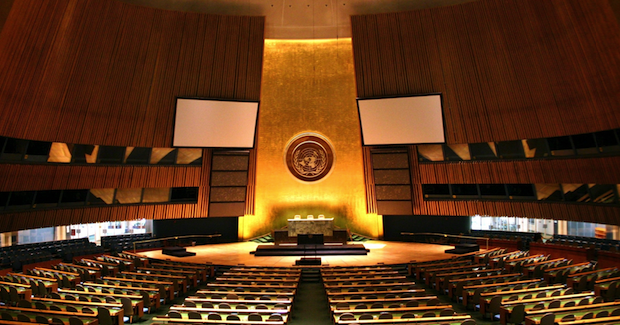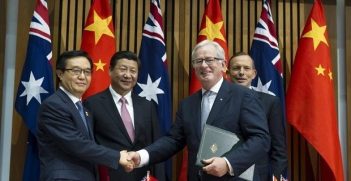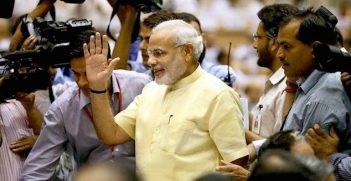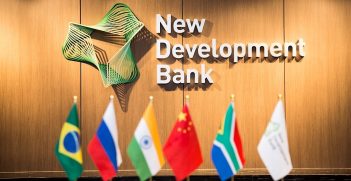Foreign Policy White Paper: Filling the New Void

In whatever ways President Donald Trump implements or moderates his policies, uncertainty and volatility now prevail. His election has unsettled the global order; he is the first US president to have no experience in governmental or military leadership. Australia must soberly confront these challenges in the upcoming foreign policy White Paper.
Australia’s response
In his campaign statements he challenged the Western consensus on international issues, ranging from trade, immigration and climate change to US alliances, national security and even nuclear weapons. This prospect confronts Australia with urgent policy choices. In particular, the US election brings to a head the obligation to define our interests and independently determine policies to advance them. New circumstances present Australia with a challenge to which the forthcoming foreign affairs and trade white paper can and should present a timely response.
The inauguration of a new administration in Washington coincides with the slow but sure demise of the liberal international order, which the United States constructed and underwrote after 1945. It represents what Senator Penny Wong has called a “change moment“. Paul Keating has observed that a wise country hedges its bets, and advised Australia not to gamble all its chips on its relationship with the US. Malcolm Fraser suggested that aspects of the alliance put Australia in danger and Greens Leader Richard Di Natale has called for a fundamental reassessment of the Australia-US alliance.
Their challenges to the government are realistic and rational; when the facts change, it is appropriate for all leaders to review their opinions. They should not shelter behind an assumption that the public will not tolerate change, nor warn the public against it. The views of Australian voters on these matters are no more reliably reflected in the mainstream Australian media than the American mood was gauged by commentators before the November election.
At this moment in our history Australia has a rare opportunity to identify specific responses to these changes. No certainty exists about US policy directions, and our policy determinations need not rely on those directions. A white paper to guide our foreign, security and trade policies for the coming decade must start with an open mind. A logical principle comes from medicine: first, do no harm, then, try to do some good.
Realism invites us to deal with the world as it is, not as we would like it to be, as the foreign minister has repeatedly affirmed. As she has also said, Australia is a top 20 nation, one that is not inconsequential and has the capacity to help shape regional security as well as global rules. In order to use this capacity wisely, Australia should have a vision of our preferred world and should seek to direct existing rules and realities where our interests and values converge. We must now identify the changes we prefer and implement them—challenges not seen since 1942.
Dilemmas, familiar and foreign
Government already makes both realistic and visionary choices. The very notion of ‘good international citizenship’ implies the application of values to decision-making. But Australia faces a dilemma between a rules-based order on the one hand and tribal solidarity with our Western allies on the other. The former is now a better option for Australian interests. Few analysts dispute that the US faces more challenges every year, and that America will before long have to concede to sharing strategic space with China, particularly in the Asia-Pacific region. In this situation we need to ensure that the choices and decisions Australia makes are based on our own careful evaluation, not simply on a perceived need to follow our alliance partner
The assumption that the US will be willing and able to defend Australia indefinitely is unsustainable, and this should be made clear to the Australian public. The benefits of the alliance to Australia are often invoked: access in Washington, discounted military equipment, training, intelligence, nuclear deterrence and military and surveillance bases. These, however, are not cost-free. The base at Pine Gap contributes to internet interception, drone strikes and early warnings of attack; both it and the US marine base in Darwin make Australia a potential target and a possible participant in wars not of our choosing. The US might protect these assets in a crisis, but not necessarily the rest of Australia.
Operating in the world as it actually is implies acknowledging that all great powers act and react like great powers. The US may lose aspects of its former hegemony but it will retain most of the attributes of a great power and therefore it will act accordingly. If Russia recovers the capacities of a great power, it will return to acting like one in pursuit of its vital interests along and near its borders. Meanwhile China, already the world’s largest economy, has the status of a major power in the Indo-Pacific region and is rapidly acquiring a global footprint.
Australian governments have for years denied that there is a need to choose between China and America. But reconciling our dominant security alliance with the US with the reality of China as our largest trading partner—and that of most of our neighbours—will require careful policy consideration and skilful diplomacy.
On the one hand, successive defence white papers have been wary of China’s military expansion and modernisation. On the other, Australia has opted to join China’s Asian Infrastructure Investment Bank and the Regional Comprehensive Economic Partnership, a China-ASEAN initiative. By refraining from provocative moves in the South China Sea, in spite of our close interoperability with the US, Australia has chosen a prudent course.
If Australia follows these tentative moves with more entrepreneurship and investment in the countries of East Asia, Southeast Asia and South Asia, we will gradually identify more with their interests and they with ours. A further rules-based opportunity is presented by the East Asia Summit and other ASEAN fora, whose members including Australia have all ratified the Treaty of Amity and Cooperation (TAC).
Incorporating key phrases from the UN Charter, the TAC commits its parties (including Australia, China and the US) to refrain from threatening or using force against each other. At this time, it is more than ever important for Australia to reaffirm the Charter’s provision against the unilateral use of force to settle international disputes. We have a new opportunity to invoke the Charter and the TAC in the interests of peace in our region, to hold others to them, and to ensure that our own behaviour upholds them.
By pursuing and expanding multiple interactions in regional countries, we can now make up for two decades of relative neglect. The study of Asian languages, histories and cultures has declined in Australia; the skilling of ‘Asia-capable’ Australians in all fields (urgently recommended in the 2012 white paper, Australia in the Asian Century) has not occurred; and two-way trade has expanded but Australian investment in Asia has not.
Is the special relationship sacrosanct?
The ANZUS alliance will endure, committing its parties as it did in 1952 to consultation if any party is threatened in the Pacific, and such regional fora as the Shangri-la Dialogue will no doubt continue. But Australia should seek active participation in Asian regional exchanges at many levels, establishing more elbow room and becoming smarter at accommodating diverse views. ASEAN was recognised as the portal for Australia’s Asia engagement in 1991 and now, as then, Indonesia continues to hold the key.
Although the transfer of emphasis back to the region is overdue, we should not exaggerate alleged threats in the South China Sea, nor take sides over them. Unimpeded passage is in the interests of all states in the region, as is the peaceful resolution of territorial claims and disputes over resources including fisheries. Agreement to this approach among all Australian political parties should be encouraged.
We have a short respite and a few months to reflect on how Australian foreign policy should change to meet the shifting circumstances of 2017 while pursuing our goals for security, prosperity and values. A transformational approach to foreign policy will require a reprioritisation of bilateral relations away from the Middle East to focus on the Indo-Pacific region. It will also require a recalibration of multilateral approaches to such pressing global challenges as climate change, terrorism, nuclear threats and the use of force to settle international disputes. In particular, as Australia did in 1972, we should at the earliest opportunity withdraw our forces from wars distant from Australia which have unintended and perverse consequences and do not serve Australian interests. Governments should refrain from such commitments in the future. Historical precedents show that this can be done.
Australia in the 21st Century is a foreign policy group that was formed in November 2016 by experts from government, the higher education sector, defence, medicine and the media. The co-signatories share a strong interest in developing independent foreign, security and trade policies for Australia in this rapidly changing world.
This article is published under a Creative Commons Licence and may be republished with attribution.





